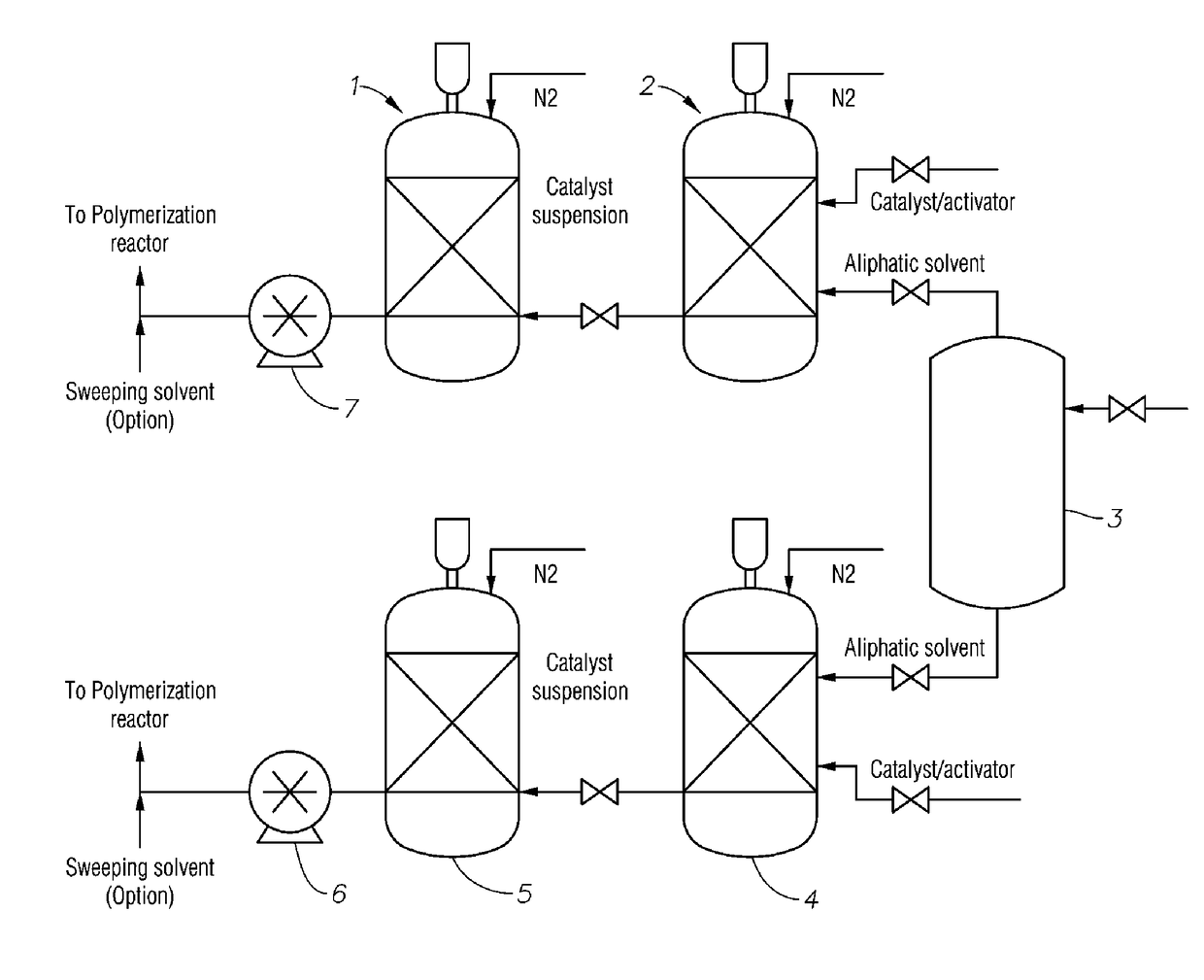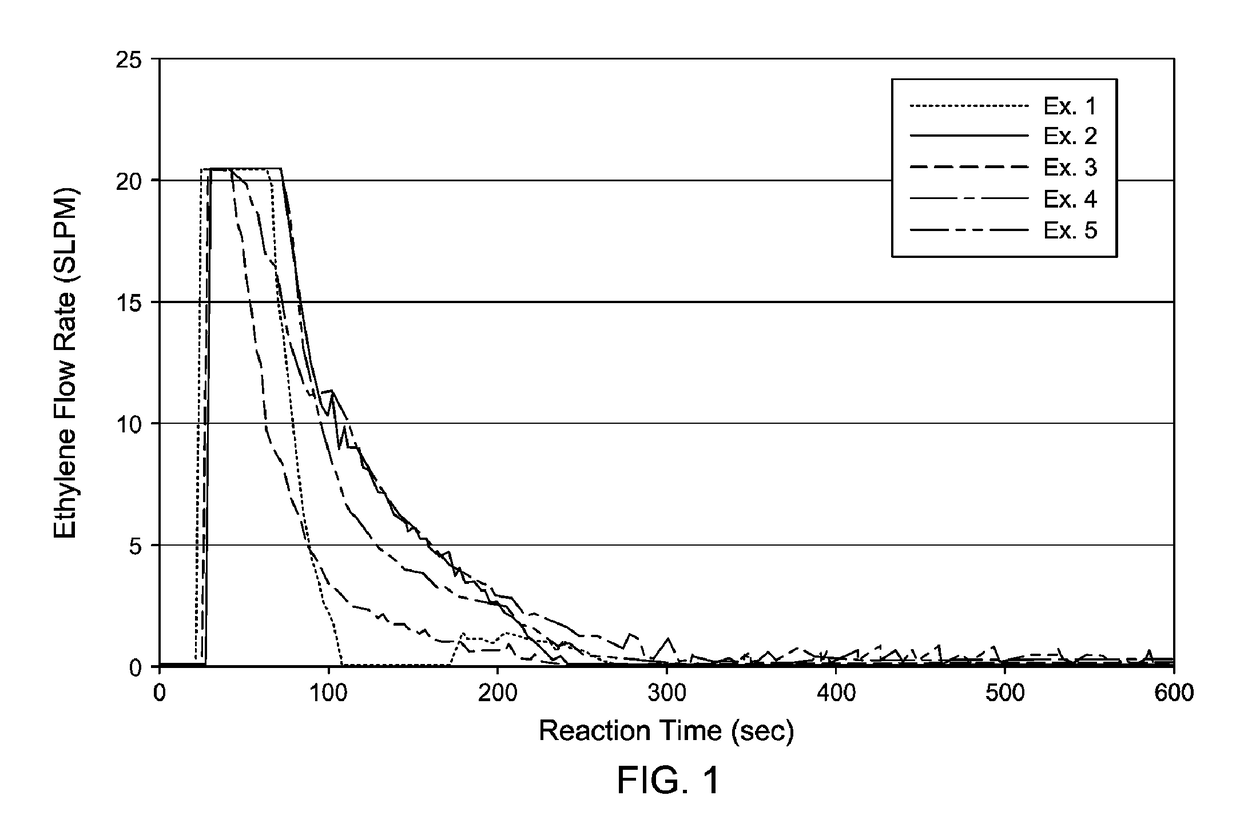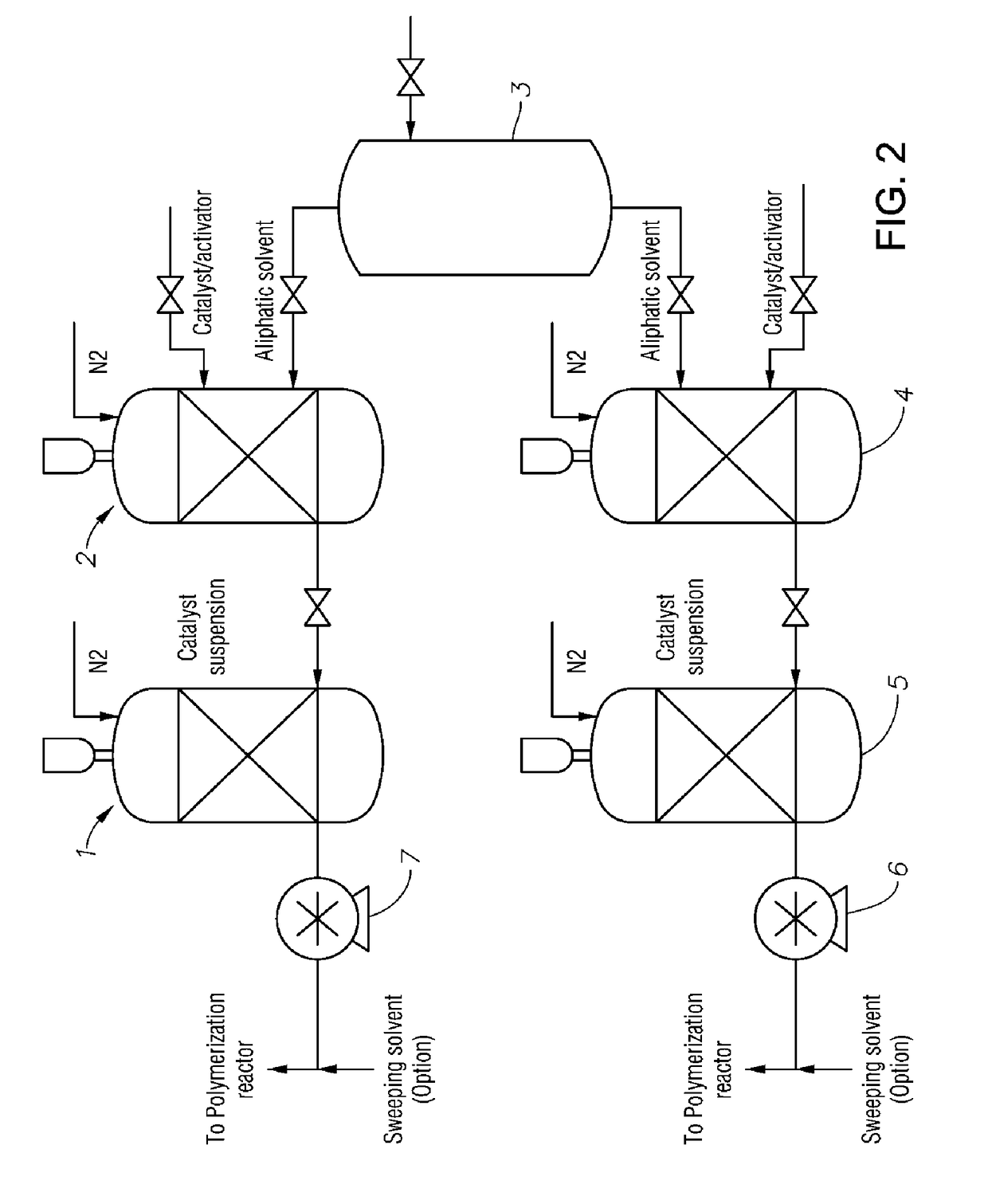Methods for Supplying Solid Catalysts to a Solution Polymerization Reactor
- Summary
- Abstract
- Description
- Claims
- Application Information
AI Technical Summary
Benefits of technology
Problems solved by technology
Method used
Image
Examples
examples 1 to 5
carbon Solvent
[0081]A set of ethylene and propylene copolymers were made using a catalyst suspension in a batch reactor to demonstrate the concept. The catalyst di(p-triethylsilylphenyl) methylene (cyclopentadienyl) (3,8-di-t-butylfluorenyl)hafnium dimethyl (an alkylated, homogeneous single-site catalyst) and dimethylanilinum tetrakis(heptafluoro-2-naphthyl) borate activator were mixed with 2 ml of isohexane to form a catalyst suspension. The molar ratio of activator to catalyst was 1 to 1. The polymerization was carried out in a 2-liter autoclave reactor equipped with a stirrer, an external water / steam jacket for temperature control, a regulated supply of dry nitrogen, ethylene, propylene, and a septum inlet for introduction of other solvents, catalysts and scavenger solutions. The catalyst concentration in the solvent (as a suspension) was 1.2 mmol / liter in each of examples 1, 2, 4 and 5, and 0.53 mmol / liter in example 3, prior to injection into the reactor. The reactor was first ...
examples 6 to 11
[0082]Examples 6 to 11 were produced in a 2-liter autoclave reactor following the same procedure as used for Example 1 to 5 except that the catalyst and activator were passed to the reactor in dry powder form. The dry powder of rac-dimethyl silylbis(indenyl)hafnium dimethyl (an alkylated, homogeneous single-site catalyst) and dimethylanilinum tetrakis(heptafluoro-2-naphthyl) borate (activator) were charged into a catalyst delivery tube, then flushed into the reactor using propylene. The molar ratio of activator to catalyst was 1 to 1. In succession, 5 ml of tri-n-octylaluminum (TNOA) solution (25 wt % in hexane, Sigma Aldrich) and 600 ml of isohexane (solvent) were added into the reactor. The mixture was then stirred and heated to a desired temperature. Then the catalyst / activator powder was flushed into the reactor using 400 ml of propylene. The ethylene was delivered on demand to maintain a constant reactor pressure during the polymerization reaction. The ethylene consumption was ...
example 12
l Suspension
[0083]Example 12 was produced in a 2-liter autoclave reactor following the same procedure as used for Examples 6 to 11 except that the catalyst and activator were suspended in a mineral oil. 2.4 mg of rac-dimethyl silylbis(indenyl) hafnium dimethyl and 5.8 mg of dimethylanilinium tetrakis(heptafluoronaphthyl) borate were mixed in 20 ml of white mineral oil (available from Sonneborn, Parsippany, N.J.). To ensure uniform mixing, the mixture was kept in an oven at 120° C. for 20 minutes, then hand shaken and cooled down to room temperature for polymerization. The catalyst concentration in the mineral oil was 0.24 mmol / liter prior to injection into the reactor. Polymerization was conducted at 70° C. and 2 ml of tri-n-octylaluminum (TNOA) solution (25 wt % in hexane, Sigma Aldrich) with other conditions kept the same as those listed in Table 2. The polymerization reaction lasted for 30 minutes and the yield was 106.7 grams. The examples show that the homogeneous single-site c...
PUM
| Property | Measurement | Unit |
|---|---|---|
| Temperature | aaaaa | aaaaa |
| Temperature | aaaaa | aaaaa |
| Temperature | aaaaa | aaaaa |
Abstract
Description
Claims
Application Information
 Login to View More
Login to View More - R&D
- Intellectual Property
- Life Sciences
- Materials
- Tech Scout
- Unparalleled Data Quality
- Higher Quality Content
- 60% Fewer Hallucinations
Browse by: Latest US Patents, China's latest patents, Technical Efficacy Thesaurus, Application Domain, Technology Topic, Popular Technical Reports.
© 2025 PatSnap. All rights reserved.Legal|Privacy policy|Modern Slavery Act Transparency Statement|Sitemap|About US| Contact US: help@patsnap.com



